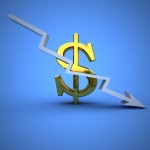With special assistance from the Wu Tang Clan, I’m going to try and address one of the weirdest, most all-over-the-place topics in the ongoing, evolving mess that is indie and self publishing.
What the HELL should these things cost?
As far as advice, you’ve come to the wrong place because I HAVE NO IDEA.
 Race To The Bottom?
Race To The Bottom?
Once upon a time, $.99 was a magical price for e-books, and people sold tons of them and made a lot of money, and thus was born the e-publishing revolution. But then Amazon figured out that their bottom line would be better if they could get people to charge more for their e-books (probably due to all the teeny tiny credit card transactions, each with its own special fees, but that’s just me guessing), so Amazon incentivized charging higher prices by paying better margins on them.
Now authors, nearly all of whom got into writing so they could avoid doing complicated math problems, found themselves doing complicated math problems to see if they could make more money by upping their price. Many of them upped the price without doing the math, many of them started the math and never finished it before upping the price, and many left the price alone for various and sundry reasons.
Suddenly you had multiple tiers of e-book pricing where once the $.99 stronghold had reigned. This naturally led to what marketing people call “perceived value.” Perceived Value is when consumers assume one product is better than another just because it costs more. This is the Jedi mind trick used by Apple, for instance, that allows them to charge otherwise intelligent people a higher price for owning a device with an apple logo on it just because it has an apple logo on it.
And just as suddenly, you had authors concerned about their image and how this tied into what they charged for their e-books. These authors started to use phrases like the aforementioned “perceived value” and “race to the bottom.”
How Unique Can Your Pricing Be When They All End In 99?
So now you have short stories settling in at around $.99, novellas sometimes costing $2.99, and full length novels slotting in somewhere between $2.99 and $4.99. Or more. Then you get into givewaways or loaning options, and you get to add a new bottom called “FREE” to race too.
Even more complicated, you have very smart people (many of whom blog about their experiments) changing the prices of different books in a series, giving one away this month and jacking up the price next month, and any other permutation you can imagine. Then they combine this with their sales figures and their ranking, and do some kind of voodoo economics behind the scenes and come to rock solid conclusions.
Rock solid conclusions that probably don’t match anybody else’s rock solid conclusions. Which leaves those of us who didn’t want to do the math in the first place swimming in even more confusing, information-rich waters.
 The Oldest Price in the Book
The Oldest Price in the Book
As I am one of the math-challenged, I have no idea what to charge for e-books. On the other hand, I know exactly what to charge for them. The same thing you charge for anything.
As much as you can get.
That’s right, get the money, dolla dolla bill y’all.
Now figuring out what that is…well, now I want your input. Friends, readers, authors, lend me your thoughts. What’s the right price for an e-book? Does it change if it’s self- or indie-pubbed versus traditionally published? When does it get too high? Does a too low price make them worth less in your head? Do the answers change for you if you take off your author hat and put on your consumer hat? Tell me what you think!





